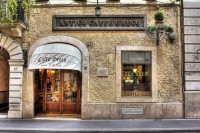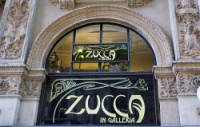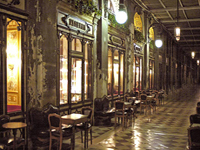Two roads diverged in a wood, and I – I took the one less traveled by, And that has made all the difference”. Thus reads one of the most famous poems by the American poet Robert Frost. And really, when one is on a short vacation as in life itself, all the difference lies in the decision to leave the more travelled path in order to tread upon new and unexplored paths, thereby giving oneself the possibility of being overwhelmed by wonderfully unexpected surprises.
By travelling along the border between Tuscany and Umbria, you can discover a host of forgotten treasures in the small towns and villages with an almost magical air, beautiful places that time has not ravaged and that still preserve their ancient beauty. A emblematic example is the fortified village of Salci, on the border of what was once the Grand Duchy of Tuscany and the Papal States: an extraordinary jewel of medieval and Renaissance architecture, which seems to be dreaming in a kind of enchanted sleep. Just a mile or two from the busy A1 highway about 20 km North West of Orvieto, here the traveler is able to enter into an archaic past in which men seem to be intruders upon a place where nature still reigns supreme.
The village was, in fact, completely abandoned in the sixties and seventies and it looks like nothing so much as a huge walled courtyard filled with lush greenery that stretches as far as the eye can see. A secret garden that is open to the most curious and sensitive spirits, far from any signs of the modern world, it even lacks the sense of rational order imposed by roads and streets, so that here one seems to breathe a genuinely sublime atmosphere of Romantic abandonment.
 Another rare gem that lies hidden in the countryside between Umbria and Tuscany is the delightful village of Castiglioncello del Trinoro, with its dominant location 774 meters above sea level, overlooking the spectacular Val D’Orcia valley. The first settlements in this place date back to the ancient times of the Villanovian peoples and the Etruscans, but today the fortress-village of Castiglioncello has a population of only thirteen people, although recently a wealthy American buyer bought half of the village and he is now renovating it extensively, so that its air of secluded peace and mystery is no doubt due to disappear fairly soon. It would therefore be a good idea to enjoy this unspoiled paradise of picturesque abandonment before it is too late.
Another rare gem that lies hidden in the countryside between Umbria and Tuscany is the delightful village of Castiglioncello del Trinoro, with its dominant location 774 meters above sea level, overlooking the spectacular Val D’Orcia valley. The first settlements in this place date back to the ancient times of the Villanovian peoples and the Etruscans, but today the fortress-village of Castiglioncello has a population of only thirteen people, although recently a wealthy American buyer bought half of the village and he is now renovating it extensively, so that its air of secluded peace and mystery is no doubt due to disappear fairly soon. It would therefore be a good idea to enjoy this unspoiled paradise of picturesque abandonment before it is too late.
 One can get there from the town of Sarteano 4 km to the East or one can take a longer but much more striking route from the village of La Foce to the North-West. There the splendid villa and garden of the Origo family is among the first things to welcome the visitor on his ramble, and from here a street of white cobblestones leads to the little cemetery of La Foce, followed by the magnificent fortified farmhouse of Chiarentana and then onwards to a hill overlooking the rooftops of the village. For the entire length of this white road the visitor has breathtaking views of the Val D’Orcia to the right, as well as the range of hills and woods known as the Crete Senesi with the hilltop town of Radicofani and the majestic mountains of Monte Amiata and Monte Cetona. All around there is a magnificent forest, which was formerly part of the Nature Reserve of Pietra Porciana.
One can get there from the town of Sarteano 4 km to the East or one can take a longer but much more striking route from the village of La Foce to the North-West. There the splendid villa and garden of the Origo family is among the first things to welcome the visitor on his ramble, and from here a street of white cobblestones leads to the little cemetery of La Foce, followed by the magnificent fortified farmhouse of Chiarentana and then onwards to a hill overlooking the rooftops of the village. For the entire length of this white road the visitor has breathtaking views of the Val D’Orcia to the right, as well as the range of hills and woods known as the Crete Senesi with the hilltop town of Radicofani and the majestic mountains of Monte Amiata and Monte Cetona. All around there is a magnificent forest, which was formerly part of the Nature Reserve of Pietra Porciana.
Upon moving into the province of Grosseto the picturesque small town of Pitigliano cannot be ignored. Its very distinctive historic center has long been known as the Little Jerusalem, due to the presence of a well-integrated Jewish community. The characteristic houses of the village are built upon a massive butte of volcanic tuff stone, with steeply overhanging cliffs into which various grottoes and caves have been excavated, and it is surrounded by ravines on three sides, which could be clearly seen by travellers coming to Pitigliano from the sea. This high rocky plateau overlooks the rivers Lente, Meleta and Prochio, and the whole area still appears wild and untamed.
Continuing on our journey on the discovery of unusual itineraries, in the heart of Tuscany, in the Artistic Natural Park of the Val d’Orcia close to the Via Francigena – the main route taken by pilgrims on their way to Rome in ancient times – we can also visit the pleasant village of Bagno Vignoni.
 The natural hot springs and waters in this place have been used as thermal baths since Roman times. At the center of the village there is in fact the “Piazza delle sorgenti”, or square of springs, with an enormous rectangular pool dating to the sixteenth century, which contains water from a hot spring of volcanic origin that emerges from the ground steaming with natural heat. Over the centuries this attractive place has been host to many famous visitors such as Saint Catherine of Siena and Lorenzo the Magnificent.
The natural hot springs and waters in this place have been used as thermal baths since Roman times. At the center of the village there is in fact the “Piazza delle sorgenti”, or square of springs, with an enormous rectangular pool dating to the sixteenth century, which contains water from a hot spring of volcanic origin that emerges from the ground steaming with natural heat. Over the centuries this attractive place has been host to many famous visitors such as Saint Catherine of Siena and Lorenzo the Magnificent.
From Bagno Vignoni our journey to a host of forgotten villages can continue, allowing us to investigate at will, because by now the secret of an enjoyable trip has become clear: the real adventure only begins when you are willing to lose yourself and to leave the beaten track in order to follow unusual paths that lead to places full of pleasant surprises that you have very likely never heard of and that you could hardly have imagined before setting off on this fantastic voyage of discovery.























